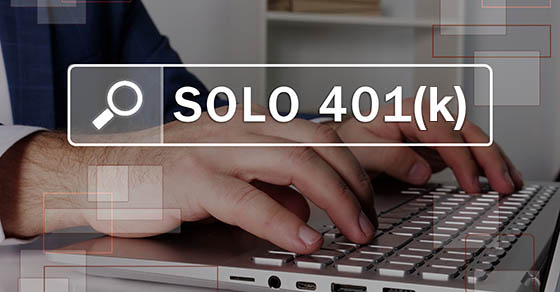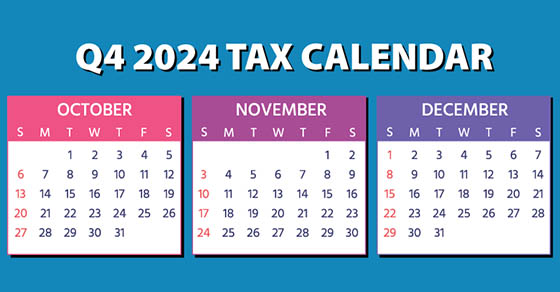2024 Q4 tax calendar: Key deadlines for businesses and other employers
Here are some of the key tax-related deadlines affecting businesses and other employers during the fourth quarter of 2024. Keep in mind that this...

If you own a successful small business with no employees, you might be ready to set up a retirement plan. Now a 401(k) might seem way out of your reach — only bigger companies can manage one of those, right? Not necessarily.
Two ways to contribute
With a
How much can you contribute? For the 2023 tax year, you can make an “elective deferral contribution” of up to $22,500 of your net self-employment (SE) income to a solo 401(k). If you’ll be 50 or older as of December 31, 2023, you can make additional catch-up contributions up to $7,500 for a grand total of $30,000.
On top of your elective deferral contribution, an additional contribution of up to 25% (depending on your business structure) of net SE income is also permitted. This additional pay-in is called an “employer contribution,” though of course there’s no employer other than you when you’re self-employed.
For purposes of calculating the employer contribution, your net SE income isn’t reduced by your elective deferral contribution. So, for the 2023 tax year, the combined elective deferral and employer contributions can’t exceed:
Along with the ability to make such a large annual deductible contribution, another advantage of solo 401(k)s is that contributions are completely discretionary. When cash is tight, you can contribute a small amount or nothing. In years when cash flow is strong, you can contribute the maximum allowable amount.
In addition, you can borrow from your solo 401(k) account, assuming the plan document permits it — which you should insist on when working with a provider (usually a financial services firm). The maximum loan amount is 50% of the account balance or $50,000, whichever is less. Some other types of retirement plans don’t allow loans.
Downsides to consider
The biggest downside to a solo 401(k) is, as mentioned, administrative complexity. You’ll encounter some substantial upfront paperwork when applying for a plan with a provider.
From there, ongoing administrative efforts will be required, including adopting a written plan document and arranging for how and when elective deferral contributions will be collected and paid into the account. Also, once your solo 401(k) account balance exceeds $250,000, you must file Form 5500-EZ with the IRS each year.
Bottom line
For a one-person business, a solo 401(k) may be a smart, tax-favored retirement plan choice as long as you have the desire and cash flow to make large contributions. This is particularly true if you’re 50 or older. Of course, there are other options to consider. We can help you shop for the right retirement plan, set one up and administer it going forward.
© 2023

Here are some of the key tax-related deadlines affecting businesses and other employers during the fourth quarter of 2024. Keep in mind that this...

Working from home has become increasingly common. The U.S. Bureau of Labor Statistics (BLS) reports that about one out of five workers conducts...

When drafting partnership and LLC operating agreements, various tax issues must be addressed. This is also true of multi-member LLCs that are treated...